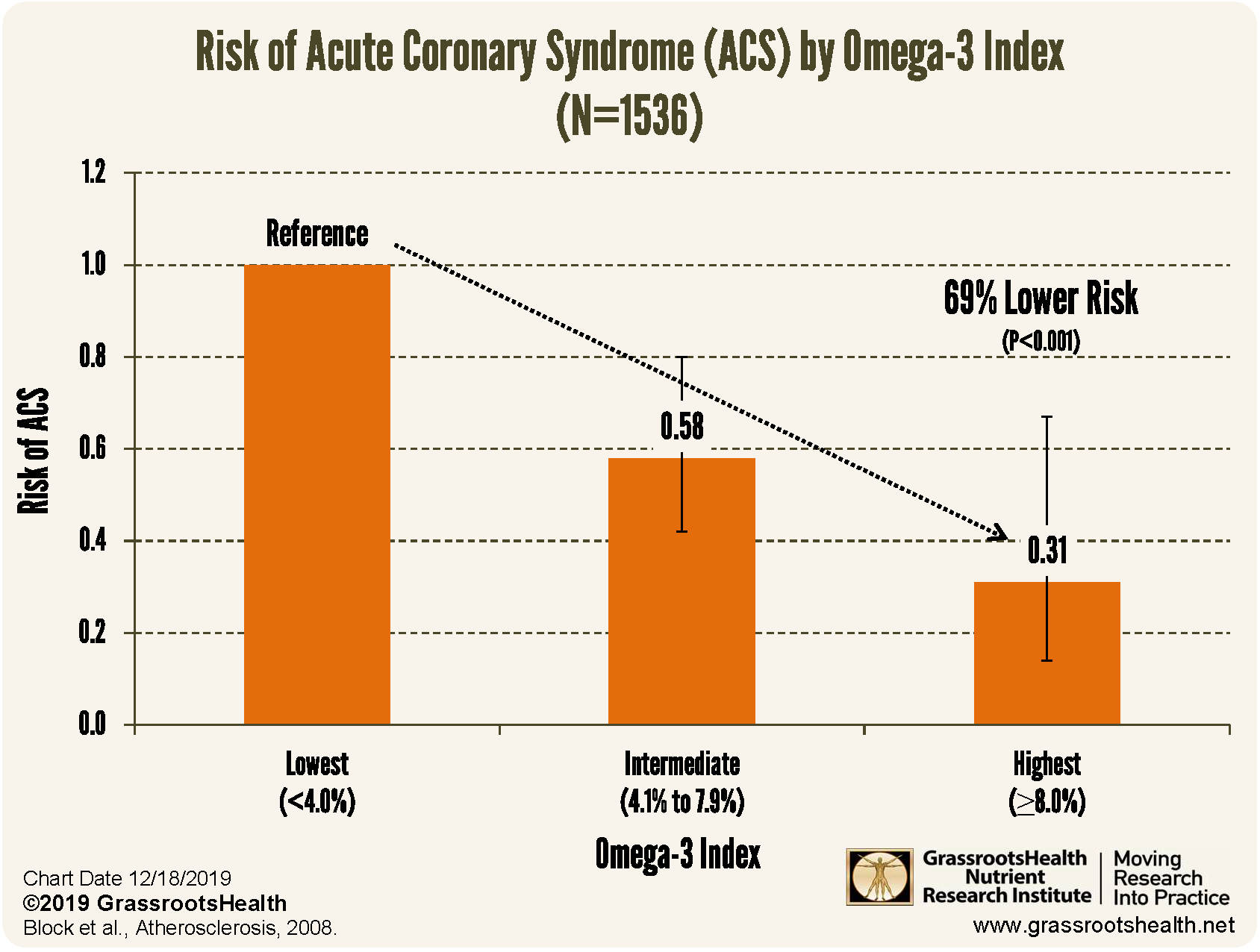Published on December 26, 2019
 The Omega-3 Index is a measurement of the amount of the EPA and DHA in red blood cell (RBC) membranes. EPA and DHA, which are found in fish and shellfish as well as some omega-3 supplements, are long-chain omega-3 fatty acids that have been linked to numerous health benefits. Studies have shown that an Omega-3 Index at or above 8% is optimal and less than 4% is deficient, particularly for cardiovascular disease. In this blog we will highlight some of these studies.
The Omega-3 Index is a measurement of the amount of the EPA and DHA in red blood cell (RBC) membranes. EPA and DHA, which are found in fish and shellfish as well as some omega-3 supplements, are long-chain omega-3 fatty acids that have been linked to numerous health benefits. Studies have shown that an Omega-3 Index at or above 8% is optimal and less than 4% is deficient, particularly for cardiovascular disease. In this blog we will highlight some of these studies.
Coronary heart disease mortality
Studies have found a decreased risk of coronary heart disease (CHD) mortality for those with higher Omega-3 Index measurements. Specifically, Harris et al. found that the Omega-3 Index associated with the lowest risk of death from CHD was 8% or higher and the index associated with the highest risk was less than 4%. Additionally, a meta-analysis of 10 cohorts found that the risk for fatal CHD was approximately 35% lower for those with an Omega-3 Index of 8.3% compared to those with an Omega-3 Index of 4.2%.
Acute coronary syndrome
Acute coronary syndrome (ACS) is caused by decreased flow in the coronary arteries such that part of the heart muscle is unable to function properly or dies. A study by Block et al. found that those with an Omega-3 Index of 8% of higher had a 69% lower risk for an ACS event compared to those with an Omega-3 Index of less than 4%.
Death from any cause
There is also evidence for a lower risk of death from any cause with higher Omega-3 Index. In the Framingham Offspring Study there was a 34% lower risk for an Omega-3 Index of 7.8% vs. 3.7%. In the Women’s Health Initiative Memory Study there was a 31% lower risk for an Omega-3 Index of 8% or higher compared to less than 4%.
Further, an Omega-3 Index in or near the optimal range of 8-12% has been linked to better cognitive function, improved arthritis symptoms, and improved depressive symptoms.
Find out TODAY if your Omega-3 Index is in the optimal range for health!
Make sure you know your Omega-3 Index (target of at least 8%) and your vitamin D level (target of 40-60 ng/ml or 100-150 nmol/L), and are taking daily steps to keep both within range. Through GrassrootsHealth Nutrient Research Institute, you can also test your essential elements magnesium, copper, zinc and selenium, toxins such as lead, mercury and cadmium, as well as your inflammation levels and thyroid stimulating hormone (TSH) level. Find out your levels today! Log on to the test selection page (click the link below) to get your tests and see for yourself if your levels can be improved.
Make sure you track your results before and after, about every 6 months! Click Here to Access the Test Page
How can I track my nutrient intake and levels over time?
To help you track your supplement use and nutrient levels, GrassrootsHealth has created an online tracking system called myData-myAnswers. For each specific supplement, you can track what days you take it, how much, and many other details. This will help you know your true supplemental intake and what patterns of use work for you to reach and maintain optimum nutrient levels. Check it out today!







